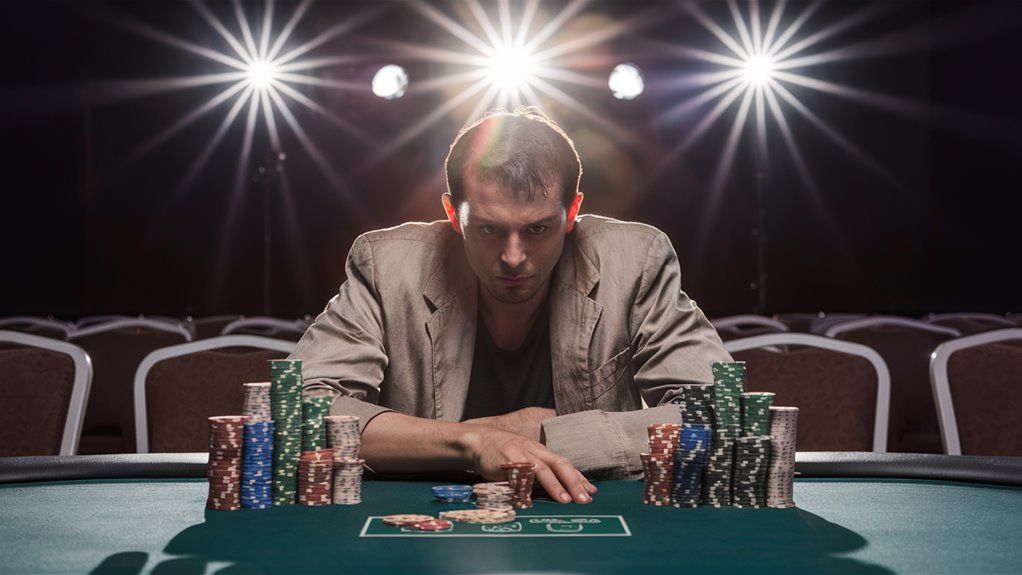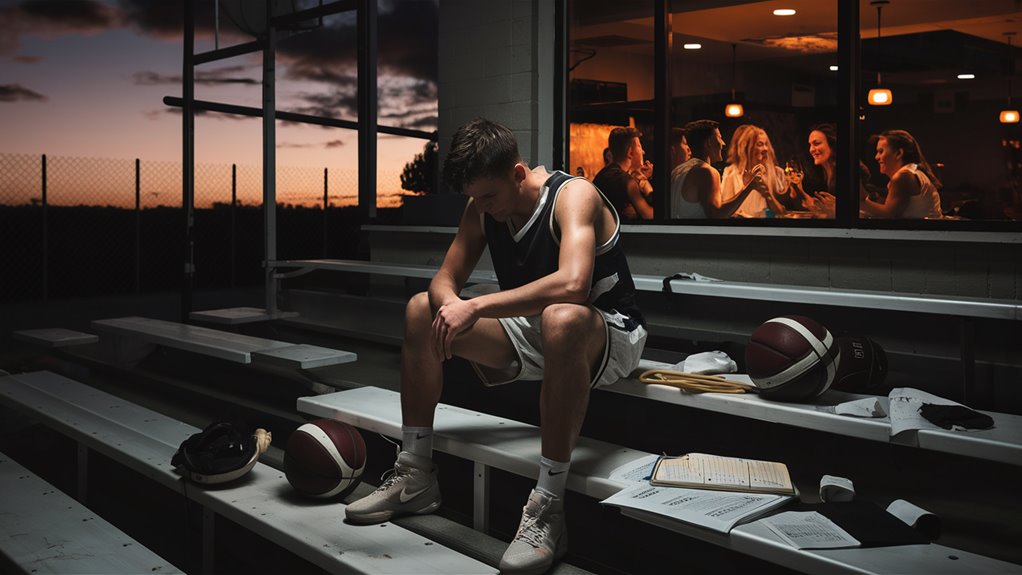
Why Some Players Never Win Big: Getting Past Limits in Performance

The Mind’s Role in Low Performance
Limiting oneself and acting out of fear are big blocks to doing well in games. Players stuck in these ways often play too safe, miss chances, and don’t grow. Studies show a huge 23% drop in performance when comparing careful players with those who can adapt more.
Limits in the Mental Game
Emotional upset is a major issue in games. Without good mental prep and strong support networks, players can’t stay calm under stress. This mental weakness often shows up in key moments, stopping them from great success when it matters most. 추천 업체 리스트 확인
Problems in Training
Useless practice slows progress. Many players repeat the same actions without thought, making bad habits worse and not fixing mistakes. Not having expert help and new sports science makes the gap even bigger between struggling players and top ones.
Getting Past Performance Stopping Points
Know these main blocks to change your game. Players must spot their own limits and start specific fixes. Success needs a mix of mental training, planned practice, and using data to get real breakthroughs.
The Mental Block in Competitive Gaming
See the Mind Blocks to Winning
Mental blocks are the toughest part of winning in games.
Players who can’t keep up performance often face deep mental issues that hit how well they play and their game results.
Big Mental Blocks in Gaming
Fear-Based Choices
Fear of losing leads to bad patterns where players choose safety over the best move.
This safe way of playing becomes a trap, as playing only to not lose often means they lose more.
Handle Feelings and Stop Tilt
Keeping tilt in check is key to doing well.
The emotional mess where upset leads to bad choices makes a bad cycle that ruins how they do.
Seeing and handling these emotional triggers is key for playing well.
Keep Focus
Staying very focused in key times is what makes the best players stand out.
Outside noise and mind talk can mess up a player’s chance to see important cues and make the most of chances.
Build Mental Strength
Top players use specific mental routines like:
- Getting ready before games
- Staying aware during the game
- Looking at data to see how to get better
- Thinking over strategies to focus on growth not just results
These mind tools help players move past mental blocks and keep up top performance.
The Key Difference Between Practice and Aimed Training
Break the Cycle of Mindless Practice
Repeating without aim and purposeless playing are big blocks to getting better.
Even as many players spend thousands of hours in games, they often don’t move past their current skill level.
This happens because unfocused practice makes both good and bad habits stick.
Put in Structured Training
Planned practice times are the base for real improvement.
Players should build a systematic way that looks at:
- Going over gameplay recorded
- Focusing on specific skills in practice drills
- Tracking progress with clear data
- Making habits by focused repeating
Make Training Work Better
The secret to faster skill growth is in focused training, not just a lot of time.
Targeted practice times should focus on:
- Drills for better mechanical skills
- Focused moving mechanics work and making them better
- Looking at errors by going over recorded gameplay
- Action plans with clear goals for getting better
This structured way changes usual gameplay into aimed progress, making each practice time add to real growth and skill mastery.
Handling Performance Fear and Fear of the Spotlight

Know Performance Pressure
Performance fear can break even the best-set play plans when players face the big challenge: doing it before others.
Top players often do worse when the audience pressure changes their smooth moves to stiff, unsure acts.
The Body’s Stress Play
The body’s stress answer leads to a lot of effects that stop good performance in intense times.
High stress signs, faster heart beat, and bad control over moves directly hurt how well they do.
Athletes facing spotlight fear often choose safe moves, moving from a winning mind to a careful one that cuts their chances to win.
Good Ways to Manage Fear
Step-by-Step Pressure Training
Using slow stress exposure through harder and harder showings helps players get tough.
More and more hard show times lets the nerve system get used to sport stress.
Mind Moves for Performance
- Seeing in mind exercises for getting ready for stress times
- Controlled breathing ways to keep body balance
- Mind changing to see pressure as a chance
- Mindset moves for keeping attack plans under stress
These tested ways help players use the spotlight as a stage to show their skills, not as a threat to how they perform.
Using these ways often builds mind toughness and makes doing well in games better.
Bad Choices Under Stress in Sports: A Full Look
The Mind Effect of Pressure on Sports Doing
The drop in choice-making skills under stress really changes how well athletes do across all game levels.
When athletes face big-time need moments, their mind moves from planned to quick answers, leading to not-so-great game results like rushed moves, forced plays, and bad tactical choices.
Know the Mind’s Stress Answer
In tight game times, the thinking part of the brain slows while the emotional part speeds up, starting fight-or-flight actions.
This mind change makes athletes drop practiced moves and go for low-chance plays, wasting years of training and game plans.
Break the Stress-Performance Loop
Planned Stress Handling Moves
The stress-made choice freeze creates a bad loop where mistakes make more worry, leading to more mistakes. Athletes can stop this through:
- Training ways made for stress
- Drills for making choices under fake stress
- Getting ready before performances
- Smart use of game breaks
These tested methods keep the mind sharp in key times, stopping quick, bad mental moves that make performance worse.
With regular practice of these ways, athletes get strong against stress-made mistakes and keep their smart making-choice skills when it’s most needed.
Moving Past Performance Comfort Zone Limits in Sports
Know Athletic Comfort Zones
Athletic comfort zones make unseen walls that cut how well competitors can do with set moves and liked plans.
These self-made walls show when athletes keep going back to known ground under tough times, using moves skilled foes can see and stop well.
Main Types of Performance Stops
Technical Comfort Zone
Technical stops show when athletes stick only to well-done basics and avoid high-risk moves.
This fear to try new moves stops the birth of game-changing skills needed for top-level play.
Tactical Comfort Zone
Tactical limits show when players keep using known strategies no matter the game set-up.
This stiffness in changing plans stops athletes from answering well to new foe moves and game changes.
Ways to Break Free
Moving past comfort zone walls needs planned skill growth through:
- Controlled skill work in set training places
- Using new moves in low-risk games
- Regular checks of how far they can go
- Pulling in smart risks into normal game plans
The best athletes keep pushing these limits, making new, tough moves into sure game wins.
The Big Impact of No Team Support Systems in Sports
Know Athletic Support Groups
Top sports doing really needs whole support groups that go way past just personal training. When these key networks aren’t there, athletes face big walls to reaching their best.
Pro support groups – like sports mind doctors, food pros, body fixers, and rest pros – are key to modern sports wins.
How Missing Support Hits Performance
Gaps in Food Help
Handling sports food needs gets hard without pros, leading to:
- Not enough power during games
- Longer rest times
- Up and down performance
- More risk of food-linked health problems
Mind Health and Sport Mind Work
Not having sports mind help opens up big weak spots:
- More worry in competitions
- Less stress-handling skills
- Lower mind toughness
- Worse choices under stress
Body Fixing and Hurt Stopping
Pro rest ways are key for keeping up performance:
- Higher hurt rates without right help
- Building up body tiredness
- Worse training use
- Shorter play life
Stats on Performance Gaps
Studies show that athletes with full support groups do 23% better than those on their own. This performance gap really shows in:
- Long game seasons
- Big-time competitions
- Getting back from hard training times
- Keeping up a long play career How to Identify a Reputable Online Casino
Looking at Competitive Downsides
Athletes without full help face big tests against those with full access to resources:
- Less reach to new sports science
- Fewer chances to make performance better
- Not as good rest ways
- Limited chances for pro growth
Today’s sport tops need whole support systems for long-term top-level play.
Not having these key parts makes clear competitive downsides that hit both now performance and long-term sports growth.


